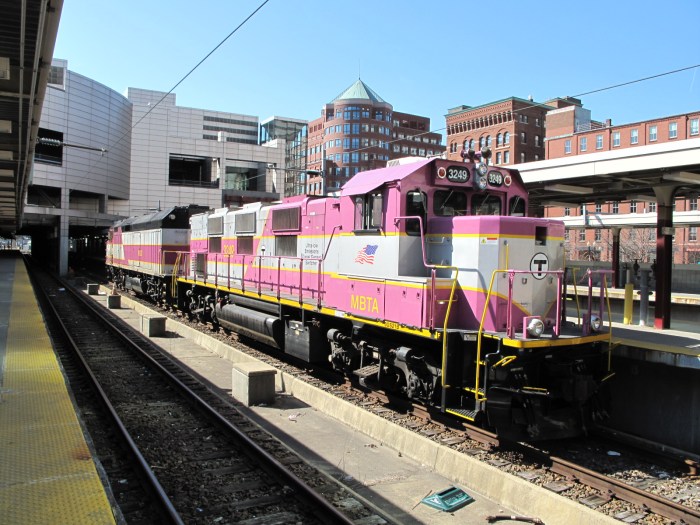The cheapest version of a rail link between North and South station would run about $12.3 billion, and a more extensive version could cost about $21.5 billion, according to a draft study by the MBTA.
The T’s analysis, pursued with the consultant Arup, dwarfs the figures in a study publicized last summer by Harvard Kennedy School students estimating the rail link would cost between $4 billion and $6 billion.
Burying commuter rail trains and Amtrak lines deep beneath downtown Boston would approach the tab for demolishing the Central Artery overpasses and building the Big Dig tunnels. In 2012, state officials tallied up the Big Dig costs to $24.3 billion.
MBTA General Manager Luis Ramirez has so far reserved judgment on whether the North-South Rail Link would be a worthwhile pursuit, telling reporters he is looking forward to seeing the results of a study looking at the future of the commuter rail.
The study, which will be the subject of a public meeting Thursday and publicized in draft form in early July, did not make any recommendations over whether to invest in the rail link. Former Govs. Michael Dukakis and Bill Weld have advocated for linking the two terminals that serve points north and south of Boston.
Dukakis urged the MBTA Fiscal and Management Control Board to be skeptical of the cost estimates, which he said are out of line with other tunnel-boring projects.
“I would simply urge you to take a very good look at the cost figures you’ve been getting. They bear no relation to reality,” Dukakis said.
New stations along the connection would be buried deeper below ground than even the most subterranean MBTA station – Porter Square in Cambridge – and the logistics of digging the tunnel would tie up train traffic along the Worcester line, according to Scott Hamwey, a state transportation planner who presented the findings to reporters.
The new stations would be 115-195 feet deep, according to the study. Porter Square is 105 feet deep.
The tunnels would be dug by a boring machine, which would create “a little bit of a mess where you start the project,” Hamwey said. The machine would be buried in the relatively tight right-of-way between Back Bay and South station where train lines run alongside the Massachusetts Turnpike.
The T could probably keep one line open along that right-of-way, but service to Worcester would likely terminate at Yawkey Station, and Amtrak service would need to be rerouted onto the Fairmount Line, according to Hamwey.
The portal north of town would be less disruptive, according to Hamwey. The scope of the endeavor would vary widely depending on whether another tunnel would be built for the Old Colony line or whether the Old Colony and Fairmount lines would continue to terminate at South Station.
Building the other tunnel – dubbed the Central Artery 4-Track approach in the study – would cost $21.49 billion with the actual tunneling accounting for $17.7 billion of that.
Other routes would be cheaper, though still a major commitment. For comparison, in 2015, MBTA officials estimated the cost of bringing the system into a state of good repair would be $7.3 billion.
If a new train tunnel followed roughly the path of the Central Artery it would cost $12.3 billion. If it chose a different route through the Financial District, it would cost $13.2 billion, and if it went another route that also passes through the Financial District it would cost $14.4 billion.
The cost of expanding South Station – an alternative to the North-South Rail Link that faces its own logistical hurdles – is $4.7 billion, according to the study.
The earlier Harvard study didn’t account for the cost of launching a boring machine, used a shorter tunnel length and didn’t factor in risk, according to Hamwey. The roughly $2 million study that is nearly complete did not identify financing options, evaluate development potential outside the project corridor or include a health assessment. The study assumes the project would be at a midway point in 2028.
The cost estimates include new vehicles to support more frequent train service to take advantage of the more interconnected rail system the link would create, according to Hamwey.
Without any changes, commuter rail ridership is expected to grow to 150,000 by 2040. Expanding South Station and increasing service would increase ridership to 195,000, according to the study. Ridership would climb to 225,000 with a rail link and enhanced service. If the T built the 4-track version of the rail link and enhanced service, ridership would grow to an estimated 250,000.
The state’s transportation efforts lost a potential funding stream on Monday when the Supreme Judicial Court tossed a proposed constitutional amendment from the ballot that could have generated an additional roughly $2 billion annually by adding a surtax to incomes over $1 million.























